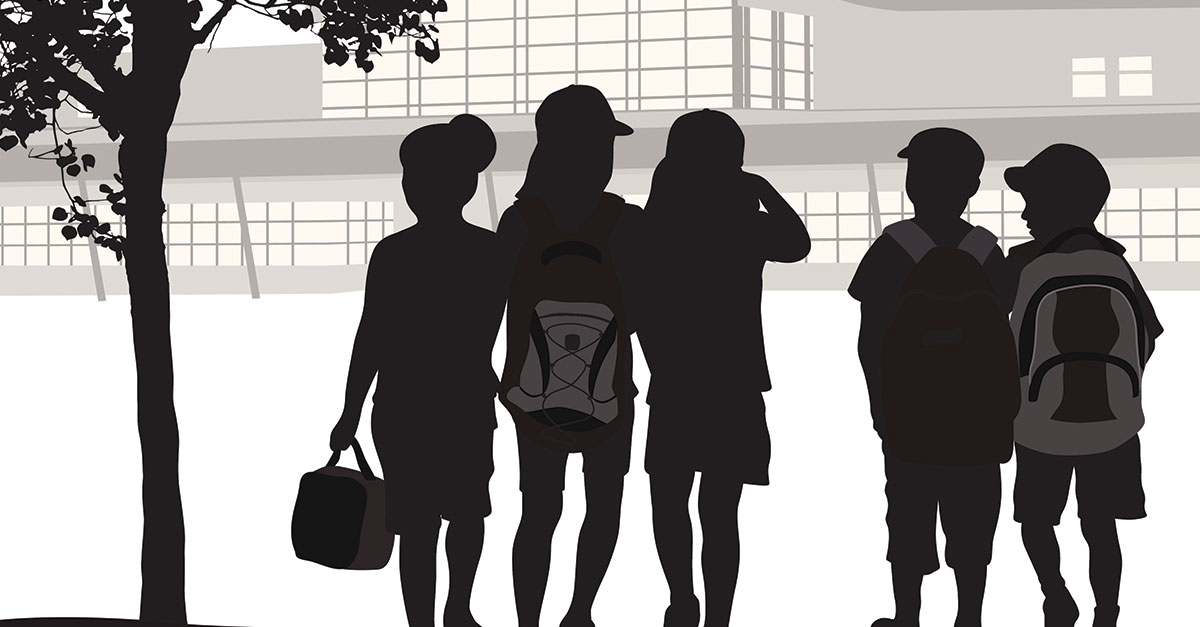The presence of police on school grounds helps with general safety by decreasing unarmed violent offenses like fights, according to a new study from researchers at the University of Albany and RAND Corporation, published by the Annenberg Institute at Brown University.
However, that appears to be where the benefits end. The working paper also finds schools with school resource officers experience an increase in gun-related offenses, use of suspensions, expulsions, police referrals and arrests of students — particularly Black youth and students with disabilities.
Using data from the U.S. Department of Education’s Civil Rights Data Collection from 2014 to 2018, researchers found that across all schools, per 100 students, the presence of an SRO increased the rate of in-school suspensions by 5.7 students, out-of-school suspensions by 10.9 students, chronic absence by 12.2 students, expulsions by 1.7 students and referral to law enforcement or school-based arrests by 4.8 students.
And while school-based policing was found to decrease violent offenses such as fights on campus by .2 incidents per 100 students, it was also associated with a .04 incidents per 100 students-increase in gun-related offenses and a 1 percentage point increase in the likelihood of a school shooting.
“The results from our analysis indicate that SROs noticeably change school environments and student outcomes. Contrary to frequently cited objectives of SRO programs, the introduction of a full-time SRO appears to increase gun-related offenses, perhaps due to increased detection and reporting activities of the police officer within the school. It also marginally increases the likelihood of a school shooting,” researchers wrote. “At the same time, the introduction of an SRO does appear to improve general student safety by decreasing non-firearm related violent offenses, such as physical attacks and fights. This benefit comes at a high cost of increased disciplinary responses both by the school and law enforcement. We find that SROs increase the incidence of in-school suspension, out-of-school suspension, expulsion, police referral and arrest, particularly in middle and high schools.”
The report also highlights inequities associated with increases in discipline. Per 100 students, the presence of an SRO on campus increases the incidence of in-school suspension for Black students at 11.4 additional suspensions — more than double the effect size for white students. Male students saw an increase of 7.4 additional suspensions.
Out-of-school suspensions also drastically increased for Black students (26.2 per 100 students), students with disabilities (23 per 100 students) and male students (16.9 per 100 students). Once again, the increase in out-of-school suspensions associated with full-time SRO presence for Black students is more than double the increase for white students, according to the report.
“For many of these disciplinary consequences, the increased use of punishment is over two times larger for Black students than white students, and significantly larger for students with disabilities than students without disabilities,” researchers concluded. “SROs also increase the rate of chronic absenteeism, a likely portent of long-term educational consequences for students.”
The report comes about a year after districts across the country — including several in California — severed their contracts with local police departments or made other adjustments to their SRO programs following intense public outcry following the murder of George Floyd. Other efforts have stalled, while some districts reportedly opting to soften their SRO programs by adopting new, less tactical-looking uniforms for officers on campus, adding body cameras or providing additional training for SROs.





